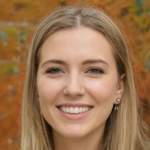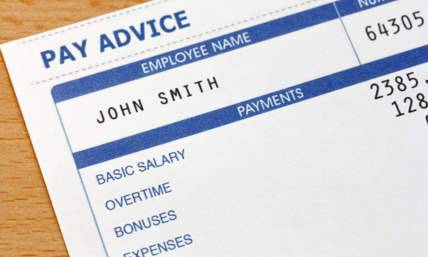How to Accurately Report Employer Sponsored Health Insurance On Your W-2 Form
Your company can face stiff penalties if you don’t prove that you’ve met the IRS rule to offer minimum essential health coverage. You must show that you provide coverage to at least 95% of your employees and their dependents every month. This rule applies if one or more employees receive a premium tax credit (PTC) through the Health Insurance Marketplace.
In 2018, the IRS increased the penalties for any reporting employer who doesn’t report health insurance on W2 forms of employees. What’s more, the IRS issues fines for every month that employees did not receive an offer of coverage. Fortunately, there's a way that business owners can avoid huge tax penalties in 2019. You can avoid trouble by understanding ACA reporting requirements.
Also read: What Happens If You Forget To File 1 Of 2 W2s?
The ACA And Reporting Health Insurance On W-2 Forms
For now, the value of the employer’s contribution to healthcare is not taxable. Businesses, nonprofits and public entities must provide health insurance under a group health plan. Also, they must verify compliance with the IRS. However, American Indian government entities, are exempt from this requirement.
There is some relief offered, as of 2012, to select employers that must transition into compliance. The IRS will continue to provide it for the foreseeable future, according to a notice on its website. Employers must record employee healthcare benefits on the value reporting form in Box 12 of Form W-2 with Code DD. There's no need to report it on Form W-3.
You should record both you and your employees’ contribution to healthcare. You don’t have to report healthcare coverage for retirees or former employees. These are workers for whom you would not provide a W-2. On its website, the IRS provides the health values definition. They also offer a detailed table outlining the type of coverage that you must report.
Also read: What Happens If I Only File 1 W2 Form?
New Penalties For 2019
One penalty the IRS levies is The Employer Shared Responsibility Payment for Failure to Offer Minimum Essential Coverage (MEC). In 2018, the IRS increased the penalty from $2,260 to $2,330 per employee. As an example, let’s say you employed 300 full-time workers in 2018, and one worker received a premium tax credit (PTC) for the entire year.
Your penalty for failing to offer health insurance to all workers would be $626,400, compared to $610,200 in 2017. According to ACA Times, the IRS will levy the penalty against each of your 300 employees – minus 30 – so long as one worker received the PTC for that year. The IRS also raised other penalties as of 2018.
The Employer Shared Responsibility Payment for Failure to Offer Coverage that Meets Affordability and Minimum Value (MV) has also increased. It went from $3,390 in 2017 to $3,480 in 2018 for each worker. The IRS may assess you this penalty if the MEC levy doesn’t apply. Typically, the agency issues this penalty if your health insurance offer is unaffordable or doesn’t offer minimum value.
Click Here to Create Your Form W-2 in Less Than 2 Minutes
In 2018, for example, the IRS will penalize an employer with ten full-time workers who received PTC credit for six months $17,400 versus $16,950 in 2017. However, the agency won’t penalize you with both the MEC and MV penalties at the same time. The IRS levies the Failure to File Penalty against employers who do not file correct return information. The fine went up to $10, increasing from $260 to $270.
For example, assume that you missed the August 1 late filing deadline in 2019. The IRS will fine you for each return that you didn't file. For your 300 employees, you'd pay $78,000 in 2017. However, as of 2018, you'd pay $81,000. The IRS doubles the penalty for willful disregard of regulations. The same applies to the intentional act of not filing.
Getting It Right
According to the American Institute of CPAs (AICPA), you must report the total company health insurance cost of all group health insurance plans. Group plans include self-insured plans contributed to the employer and employer-sponsored health coverage. They also include direct coverage and various other forms of health insurance.
You can review the definition of group coverage by reviewing the Consolidated Omnibus Budget Reconciliation Act (COBRA). COBRA defines a group health plan as a group insurance policy or other arrangements of health insurance that cover healthcare for two or more workers. The COBRA definition of healthcare includes the diagnosis, cure, management and prevention of diseases.
You must also typically report the cost of taxable group health insurance, according to the AICPA. In this instance, the value of coverage of other people counts as employee gross income. These people may include an independent domestic partner or child under the age of 27. You must report this type of coverage on your workers' W-2 form.
If a self-insured plan discriminates in favor of highly paid employees, don't include that amount in your report. You must, however, include the amount of excess reimbursement in the individual’s gross income. Subtract that amount from that employee’s cost of coverage to figure out how much to report as your contribution to benefits on their W-2.
Stay In Compliance!
There’s a lot more to correctly reporting employee health insurance on W2 forms. It's essential to consult with a financial advisor, especially if you have numerous employees. By working with a professional, you’ll increase the likelihood of filing correctly. It’s easy to make mistakes when it comes to taxes, but the more you know, the less likely you are to have a problem.
By understanding IRS regulations, you can reduce errors. At the very least, you’ll have a starting point for discussion when speaking with a professional financial advisor. This information can help you avoid late penalties and fees. It’s essential that you learn the basics about filing your business taxes and reporting financial information to the IRS.
If you own a business, tax reporting is an important responsibility. Learn the right way to do it now to prevent problems down the line. Need to create your own W-2 form? Let us help you get started today! Be sure to always have your own paystubs documented as well!
Also read:















